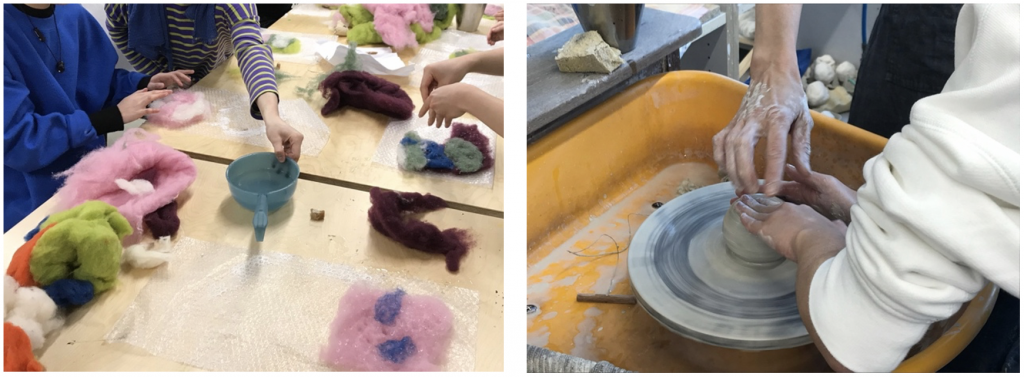Learn x Design 2021
DRS LEARNxDESIGN 2021: 6th International Conference for Design Education Researchers Engaging with Challenges in Design Education | Shandong University of Art & Design, Jinan, China | 24–26 September 2021
EMAL members Anne Solberg, Ellen Baskår, and Camilla Groth participated in the track “Co-creation of Interdisciplinary Design Educations” that welcomed contributions discussing challenges and potentials experienced by researchers engaging in interdisciplinary research involving design and other domains. The track was co-chaired between Arild Berg Oslo Met, Camilla Groth USN, Fausto Medola Sao Paulo State University, Brazil and Kate Sellen, OCAD University, Canada
Anne Solberg and Ellen Baskår presented their paper “Co-creating a Cross-Material Silk and Porcelain Art Exhibition” . Abstract: This paper resides in the field of artistic research and material-based art. The research issue is the co-creation of an art exhibition by two artist-researchers working with diametrically different materials. The research project is structured as a duo-ethnographic approach, with the voice of each participant present. The communication throughout the project was not vocal only, but visual and material. Hence, text and images are inter-twined in the paper, both necessary for the communication of the project as a visual and material enterprise. Theoretical perspectives are the dialogue as a poly-vocal enterprise, embodied making and learning, and the role of materials in the art-making. The planned art exhibition proved to be crucial for the direction of development of the participants’ personal aesthetic expressions. The co-creation and collaboration process was a vital force throughout the project, enhancing awareness of the other and each artist learning from the other. The research approach forced the artists to give the other and the public access to personal artistic strife and struggle, thus enhancing the transparency that is crucial for a learning process and required in a research project.

Bilge Merve Aktaş presented the paper “Using Creative Practice in Interdisciplinary Education” written together with Camilla Groth. Abstract: Interdisciplinary approaches in education help future professionals build better understanding and a common language between disciplines and individuals. To make such leaps, skills in adjusting to new situations and rapidly changing knowledge systems are needed. Such skills are intrinsic to design practice, and design and making practices lend themselves well to such personal development. Design and making activities also offer opportunities for students from different disciplines to gather around central topics and engage in interdisciplinary discussions about matters that concern everyone and to materialize their understanding while reflecting on their personal process. In this paper, we present a course design in which this type of transformational reflection might take place, and we discuss how designing and making processes can provide suitable means to build a platform for interdisciplinary discussions and learning. By examining an interdisciplinary group of students’ creative processes, we found that navigating unknown situations with the explorative and adaptive mind-set that emerges through reflection creates transferrable skills that are useful in interdisciplinary interactions and communication.

Images from the studio. Photo: Bilge Merve Aktaş, 2020.